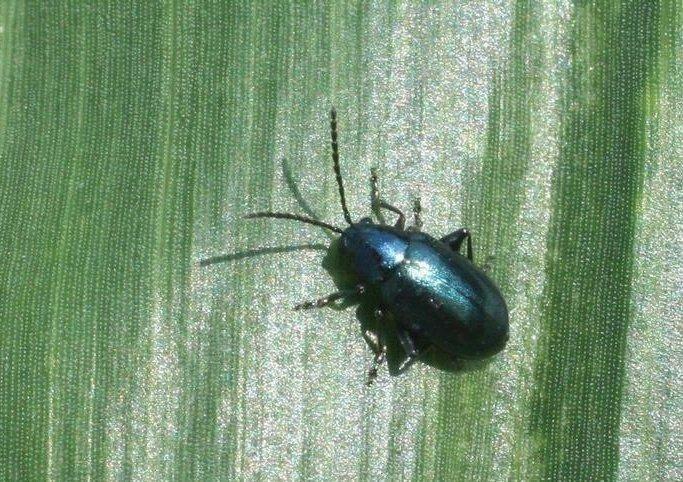Corn Flea Beetle
Chaetocnema pulicaria
|
Adult corn flea beetle. |
Corn flea beetles are small, shiny, jumping beetles that strip the upper surface from seedling corn leaves. They overwinter as adults and may enter corn fields as plants emerge. Damage takes the form of long feeding scars running parallel to the leaf veins. Injury is most likely during the two- to four-leaf stage, especially when cold weather slows plant development. Damage levels should be carefully assessed before applying any chemical control measures, as the extent of the injury is often overestimated. Provided the growing point of the plant has not been killed, and growing conditions are favorable, corn can easily recover from the 'window-pane' damage caused by adult feeding without any yield impact. Treatments are seldom warranted unless populations on two-leaf corn exceed four to five beetles per plant, and even then, satisfactory control can usually be obtained with spot treatments restricted to field borders or heavily affected areas. Seedlings from seed treated with systemic insecticides such as thiamethoxam or imidicloprid (Poncho, Cruiser, etc.) will usually be immune to damage, but flea beetle protection is not a sufficient reason to apply a seed treatment.
Please refer to the most recent version of the Corn Insect Management Guide for treatment options.
For more detailed information on the biology and management of corn flea beetle, see KSRE publication MF2832: Corn Flea Beetle.
Page last updated 3/28/2024 by J.P. Michaud.
